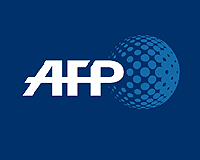
 |
Attracting thousands of plane aficionados, industry executives and the world's media, the biennial show near London is expected to highlight a tentative recovery in the battered civil aviation industry.
It will be the first Farnborough since European aircraft manufacturer Airbus stole the top spot in civil aviation from US arch-rival Boeing last year.
The pair are preparing to trade blows again this week, vaunting their different visions of the future of commercial aviation, Boeing with its fuel-efficient midsize 7E7 scheduled for delivery in 2008 and Airbus with its A380 superjumbo due to enter service in 2006.
Neither model will be flying at the show, however.
The commercial rivalry between the two manufacturers has heated up recently as the pair spar over state aid, with Boeing accusing Airbus of receiving unjustified government subsidies and threatening to retaliate.
But with global passenger traffic levels now back at levels seen before the September 11, 2001 terrorist hijackings, both appear more optimistic about the outlook for commercial aviation.
"We have good signs of recovery. Passenger traffic is improving very rapidly," Philippe Camus, joint chief executive of EADS, which owns 80 percent of Airbus, told reporters ahead of the show.
Airbus believes it has stolen a march on Boeing with the development of the 550-seat A380 superjumbo, which will be the world's largest airliner, eclipsing Boeing's 747. It already has 129 orders for the A380.
Boeing meanwhile is pinning its hopes on the 7E7, a midsize jet which the US group says is 20 percent more fuel-efficient than comparable aircraft in its class, with the long-haul range of a larger aircraft.
It has already orders for 62 planes including 50 from All Nippon Airways and two from Air New Zealand. It recently announced its first European customers, with 10 tentative deals with charter airlines First Choice and Blue Panorama.
The US aircraft maker has been asked by 30 airlines to make proposals, which may lead to orders by the airlines for nearly 600 7E7 aircraft, said Alan Mulally, head of Boeing Co's commercial aircraft division.
Of these airlines, 24 have agreed to the proposals put forward by Boeing and paid a refundable deposit entitling them to delivery slots should talks lead to a firm order. These agreed proposals may lead to orders for around 200 of the new aircraft.
"The 7E7 has generated the most interest we have ever got early on when launching a new aircraft," he told reporters in London on the eve of the Farnborough Air Show.
Airbus sees larger aircraft such as the A380 as a way of easing congestion through the traditional hub airports such as London Heathrow.
Boeing meanwhile argues that airlines will increasingly fly direct between cities, by-passing congested major airports, so medium-sized jets suit their needs better.
"Their major area of difference is how people are going to travel long distances in the future," said Philip Butterworth-Hayes, an aviation consultant and editor at Jane's Information Group.
Both companies had different solutions to the same, major problem of airport congestion and constraints on airport expansion.
"You're going to get the two things happening. You're going to get the concentration on the hubs and you're going to get increasing regional services. I think the trends are that both are right."
Boeing and Airbus will not be the only aerospace and defence companies vying for deals and publicity at the show, which has attracted a record number of US participants.
Among the many other companies setting up stall at the show, Bombardier of Canada is set to announce that it is to build planes of more than 120 seats, having focused on regional airliners of fewer than 100 places until now.
SPACE.WIRE |